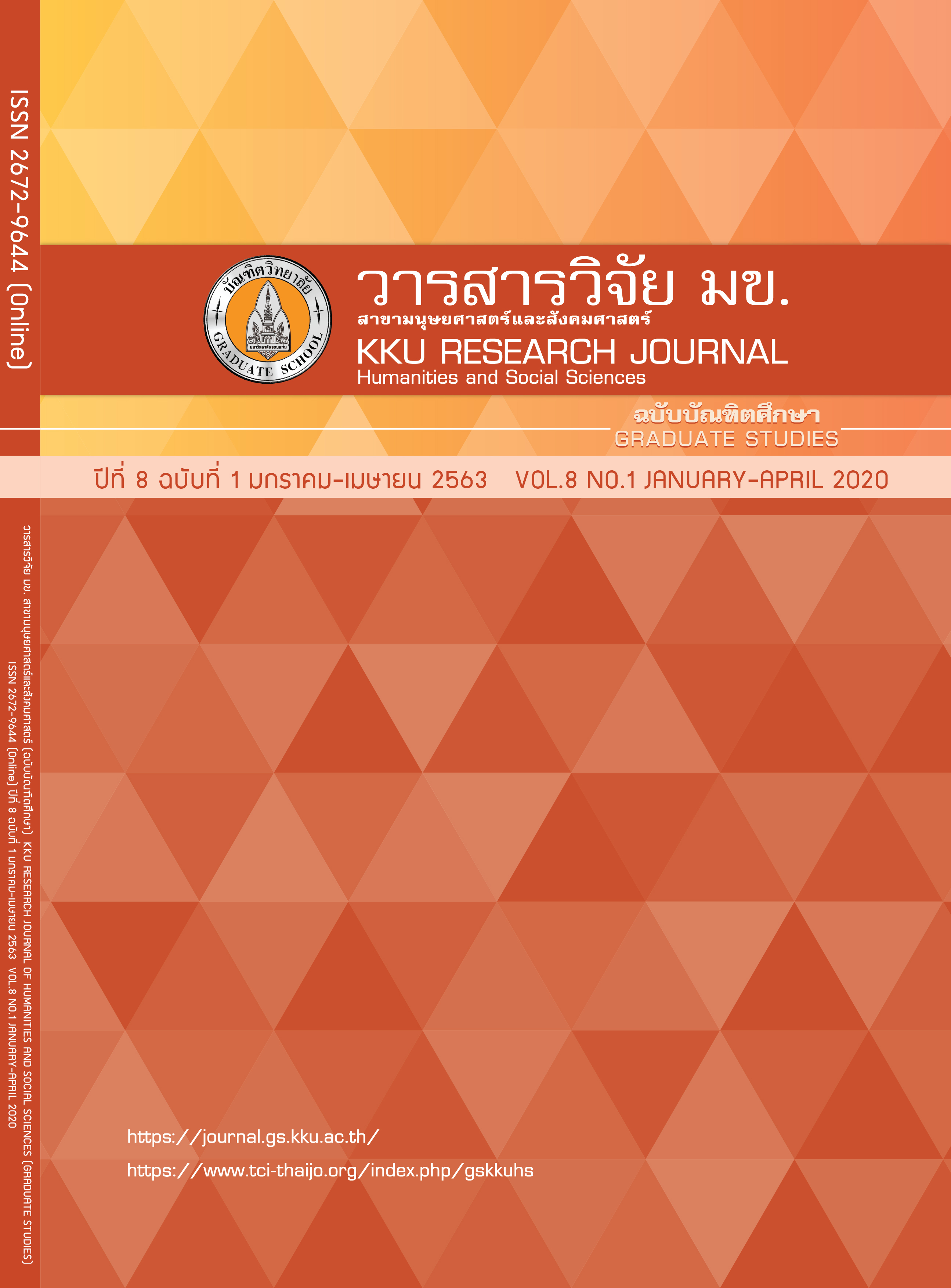The Development of the Oral Health Literacy Test in Grade 4-6 Students
Keywords:
Oral health literacy test, Grade 4-6 students, Item response theoryAbstract
The research aims to 1) design the oral health literacy test in grade 4-6 students, and 2) quality analysis of the oral health literacy test. The sample groups for the study are grade 4-6 students, 830 people in total. The oral health literacy test consists of 24 questions. The statistical used for evaluating the quality of the test are IOC index, cronbach's alpha coefficient Pearson's, correlation coefficient, confirmatory factor analysis, and Item Response Theory with Graded Response Model (GRM) using R Studio software. The results show the content validity of the research through 6 elements; 1) the accessibility of the oral health literacy 2) the understanding in the oral health literacy 3) the evaluation of the oral health literacy 4) the usage of oral health literacy 5) the communication with dental professions, and 6) the support from the society. The test gives the IOC index from 0.-1.0, cronbach's alpha coefficient equals to 0.94, the construct validity with the X2/df = 1.648, RMSEA = 0.046, SRMR = 0.059, and the test shows the criterion-related validity. The evaluation with Item Response Theory gives the slope parameter lies between 0.79 to 1.17 with the increase threshold parameter 1, 2, and 3 in every question, which implies the questions in the test are good in quality.
References
The New Imperative to Better Oral Health. Dental Clinics
of North America. 2008; 52(2): 333-344.
2. American Dental Association. Health literacy in dentistry
strategic action plan 2010-2015. United States: American Dental
Association; 2010.
3. Bureau of Dental Health Department of Health Ministry of
Public Health. The 8th National Oral Health report Thailand 2017
[Internet] 2018 [cited 2018 September 15] Available from:
http://dental2.anamai.moph.go.th/ ewtadmin/ewt/dental/
main.php?filename=stat. Thai.
4. Sodsee A, Srithai, P, Panawan T. Oral health literacy and
oral health status student: A case study of primary schools in
collaboration with Sirindhorn college of public health Suphanburi.
Journal of Faculty of physical education. 2017; 20(2): 150-158. Thai.
5. Ueno M, Takeuchi S, Oshiro A, Kawaguchi Y. Relationship between
oral health literacy and oral health behaviors and clinical status in
Japanese adults. Journal of Dental Sciences. 2013; 8: 170-176.
6. Nutbeam D. The evolving concept of health literacy.
Social Science & Medicine. 2008; 67(2): 2072-8.
7. Dickson-Swift V, Kenny A, Farmer J, Gussy M, Larkins S.
Measuring oral health literacy: a scoping review of existing
tools. BMC oral health. 2014; 14(1): 148.
8. World Health Organization. Health Promotion.
WHO Publications; 1998.
9. Sorensen K. Health literacy: a neglected European
public health disparity [PhD thesis]. Netherlands:
Maastricht University; 2013.
10. Briggs AM, Jordan JE, O'Sullivan PB, Buchbinder R,
Burnett AF, Osborne RH, et al. Individuals with chronic
low back pain have greater difficulty in engaging in positive
lifestyle behaviours than those without back pain:
An assessment of health literacy. BMC Musculoskeletal
Disorders. 2010; 12: 161-161.
11. Jordan JE, Buchbinder R, Briggs AM, Elsworth GR,
Busija L, Batterham R, et al. The health literacy management
scale (HeLMS): a measure of an individual's capacity to seek,
understand and use health information within the healthcare
setting. Patient Educ Couns. 2013; 91(2): 228-235.
12. Intarakamhang U. Creating and Developing of Thailand
Health Literacy Scales. [Internet] 2018 [cited 2018 May 9]
Available from: http://bsris.swu.ac.th/upload/268335.pdf. Thai.
13. Parker EJ, Misan G, Chong A, Mills H, Roberts-Thomson K,
Horowitz A M, et al. An oral health literacy intervention for
Indigenous adults in a rural setting in Australia. BMC Public
Health. 2012; 12: 461.
14. Jones K, Parker E, Mills H, Brennan D, Jamieson LM.
Development and psychometric validation of a Health
Literacy in Dentistry scale (HeLD). Community Dent Health.
2014; 31(1): 37-43.
15. Leekitwattana P. Educational research methodology.
7thed. Bangkok: Faculty of industrial education,
King Mongkut's Institute of Technology Ladkrabang; 2011. Thai.
16. Hu L-T, Bentler PM. Cutoff criteria for fit indexes in covariance
structure analysis: Conventional criteria versus new alternatives.
Structural equation modeling. 1999; 6(1): 1-55.
17. Mueller RO. Confirmatory factor analysis. In Basic principles
of structural equation modeling: Anintroduction to LISREL and EQS.
New York: Springer-Verlag; 1996.




